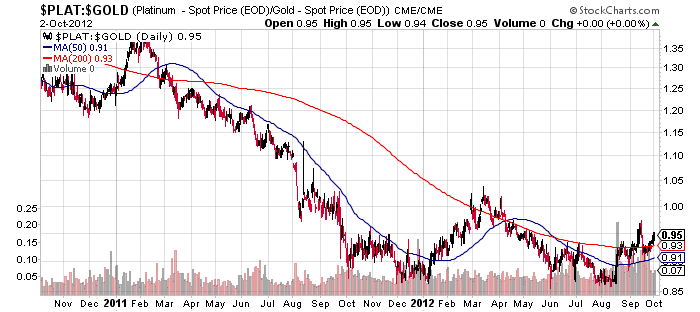|
Stock Indices |
Sep 2013 |
Q3 2013 |
YTD 2013 |
|
Global, All Country (MSCI ACWI) |
5.1% |
7.9% |
14.5% |
|
US Large Cap (S&P 500) |
3.1% |
5.3% |
19.8% |
|
US Small Cap (Russell 2000) |
6.4% |
10.2% |
27.7% |
|
Non-US Developed (MSCI EAFE) |
7.4% |
11.6% |
16.2% |
|
Non-US Emerging (MSCI EMG) |
6.5% |
5.8% |
-10.2% |
|
Gold Bullion |
-4.9% |
17.0% |
-16.2% |
One of these days, we’ll wake up and the state of the U.S. political system and its current state of turmoil and ineptitude won’t be the most important determinant of short term investment trading. Sadly, that day is not upon us, as the Republican House, Democratic Senate and President Obama continue to tweet, flutter and pontificate about the budget ceiling, the Affordable Care Act and the U.S. budget for 2014 and beyond.
The uncertainty created by our political leaders and their dismal foray into fiscal adventurism and brinkmanship was a determining factor in the Federal Reserve decision to continue monetary stimulus, confounding market experts and reversing the Fed’s previous indications of tapering, thus increasing volatility in the currency, equity and fixed income markets during the quarter ended September 30 and into early October.
Domestic equities
U.S. equity markets posted strong results in the 3rd quarter with all major indices achieving measurable gains. Performance was skewed towards riskier assets across capitalization, valuation, and quality. Small cap stocks (Russell 2000) significantly outperformed large cap (S&P 500 Index) stocks. Value trailed growth by as much as 5% across the capitalization spectrum with small cap growth claiming the largest gains. Within the sectors of the S&P 500, Materials (+10.3%) and Industrials (+8.9%) performed best as improving global economic conditions drove expectations higher while Telecoms (-4.4%) and Utilities (+0.2%) performed worst as the sectors’ yield premiums over fixed income alternatives eroded with rising interest rates.
Foreign Equities
Foreign equities outperformed their U.S. counterparts in both local currency and U.S. dollars. The U.S. dollar weakened 3.5% versus a basket of six major trading partners’ currencies as signs of recovery emerged in Europe and investors were unnerved by uncertainty over the timeline for the end of the Fed’s stimulus measures. Developed markets small caps were the best performing area among broad global equity as the MSCI EAFE Small Cap Index rose more than 15%.
Emerging markets equities continued to be significant laggards relative to much of the developed world; however, results were in line with U.S. equities in U.S. Dollar terms. The currency impact across emerging countries was small in aggregate but widely mixed on a country basis with significant weakness in Indonesia and India and strength in Eastern Europe. The BRICs posted mixed results for the quarter with returns for Brazil +8.4%, Russia +13.7%, China +12.2% and India -5.3%, all in US dollar terms.
Bond market investors continued to be jittery in the 3rd quarter following the upheaval that occurred in the 2nd quarter in response to the Fed’s “taper” threat. The quarter-over-quarter rise in yields was a modest 12 bps, but this increase masked significant intra-quarter volatility. The 10-year U.S. Treasury Note yield opened the quarter at 2.5% and peaked at a 26-month high of 3.0% on September 5th. The Fed then surprised investors with its September 18th announcement that it was not yet going to curtail bond purchases. Investors had already priced a “tapering” of bond purchases into the market and, as a result, yields fell sharply.
The 10-year U.S. Treasury yield retreated to close the quarter at 2.6%, only modestly higher than the 2nd quarter’s closing level, and it delivered a return of -0.7% for the quarter. Corporate bonds and mortgages outperformed like-duration U.S. Treasuries and lifted the Barclays Aggregate Index to a 0.6% 3rd quarter return; however, year-to-date the Index remains down 1.9%. High yield bonds continued to perform well, benefiting from a strong stock market and lower sensitivity to interest rates than the high grade sectors.
The Barclays U.S. High Yield Index was up 2.3%, bringing its 2013 return to 3.7%. Bank loans continued to attract strong demand, boasting 66 consecutive weeks of inflows to mutual funds. The S&P/LSTA Index returned 1.2% for the quarter, bringing its year-to-date return to 3.5%. The TIPS market recovered from significant underperformance in the 2nd quarter and outperformed nominal U.S. Treasuries. The 3rd quarter return for the Barclays 1-10 Year TIPS Index was 0.9%.
Global Bonds
Broadly, foreign bonds outperformed U.S. bonds in the 3rd quarter. Unhedged returns were significantly better than hedged as the U.S. dollar reversed course and weakened versus most currencies. The dollar depreciated 3.5% versus a basket of six major trading partners’ currencies as signs of recovery emerged in Europe and investors were unnerved by uncertainty over the timeline for the end of the Fed’s stimulus measures.
The Citigroup World Government Bond Index (unhedged) returned 2.9% versus the hedged version’s return of 0.7%. Year-to-date, however, the unhedged version remains sharply lower at -2.9% versus 0.1% for the hedged index year-to-date.
Inflation
Global inflation expectations remain low although the US inflation rate for the 12 months ended August 31, 2013 at 1.5%. The low inflation expectations have contributed to inflation-protected security poor performance, despite a record global monetary accommodative policy.
Macro View
Franklin Roosevelt famously said, “We have nothing to fear but fear itself”. Every crisis creates fear and uncertainty, and uncertainty is a drag on economic growth. Our fear is that political crisis manufactured in Washington is now a major contributor to slowing economic growth here and abroad. Politically-derived uncertainty is now a factor in economic and investment forecasting.
Reduction of such uncertainty as a result of political compromise has historically resulted in rallies in equities from crisis-induced lows. Increases in uncertainty in the past have led to slowing growth, lower interest rates and higher asset price volatility. The longer the crisis, the greater the effect. While we wish for the elimination of this uncertainty, we are not optimistic that the current group of federal leaders are capable of meaningful change.
Our macro view is that the US economy will continue its US Goldilocks recovery, neither too hot nor too cold, growing at 2.5% or so, with somewhat slower growth if uncertainty remains high. Eventually, we expect intermediate interest rates to modestly increase to reflect this slow economic growth and Federal Reserve tapering, probably in the first half of 2014 after Yellen becomes Fed chair
Euro area growth went positive in the second quarter to 0.3%, albeit with major structural impediments to stronger growth. Asian markets experienced some increase in growth with China GDP growing at 7.5% and Japan GDP growth of 1%.
The world’s central banks continue to pursue a policy of monetary expansion with few expectations of inflation increasing because of relatively weak economic growth. Our expectation is that, this easing will slow in time as economic growth becomes more prevalent. At this writing, we do not see enough growth in international economies to warrant fiscal tapering. This should continue to be good news for international equity markets, particularly in Europe. Emerging markets growth rates remain lower than past growth, albeit faster than the developed world.
Summary
Despite the recent political uncertainty, we remain cautiously optimistic with regard to global equities relative to fixed income investments. At the end of the third quarter, we rebalanced our investment portfolios to reflect our current views and expectations for the quarter and year ahead. We are happy to provide a summary of our changes in investment outlook and positioning of your portfolios upon request. The portfolios remain globally diversified dynamic portfolios, providing the long term investor with core portfolio holdings in asset classes that cover the major areas of global economic growth.
Certain information contained in this article is based upon forward-looking statements, information and opinions, including descriptions of anticipated market changes and expectations of future activity. The manager believes that such statements, information and opinions are based upon reasonable estimates and assumptions. The reader should not assume that any investments identified were or will be profitable or that any investment recommendations or investment decisions we make in the future will be profitable. Past performance is no guarantee of future results.



